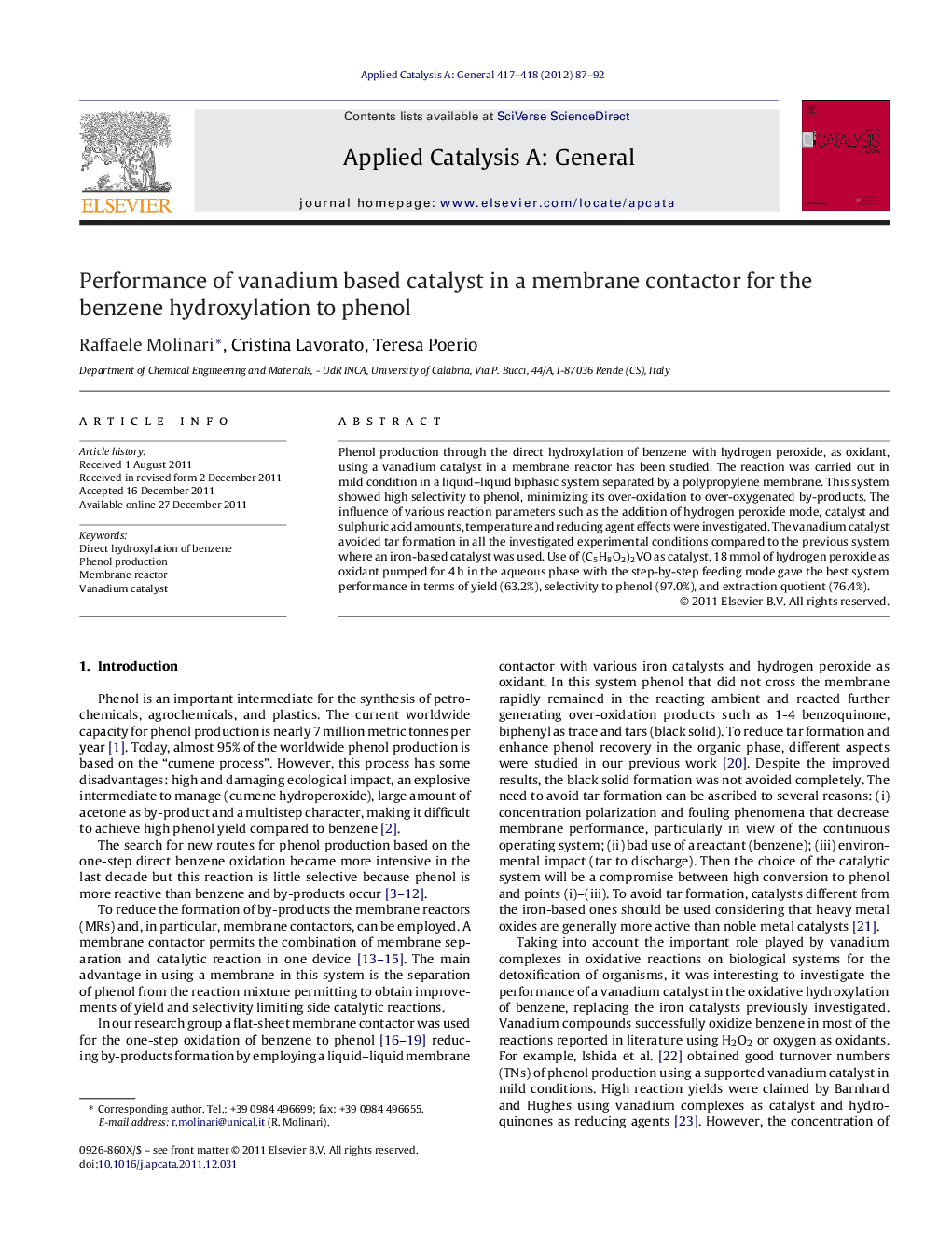| Article ID | Journal | Published Year | Pages | File Type |
|---|---|---|---|---|
| 41164 | Applied Catalysis A: General | 2012 | 6 Pages |
Phenol production through the direct hydroxylation of benzene with hydrogen peroxide, as oxidant, using a vanadium catalyst in a membrane reactor has been studied. The reaction was carried out in mild condition in a liquid–liquid biphasic system separated by a polypropylene membrane. This system showed high selectivity to phenol, minimizing its over-oxidation to over-oxygenated by-products. The influence of various reaction parameters such as the addition of hydrogen peroxide mode, catalyst and sulphuric acid amounts, temperature and reducing agent effects were investigated. The vanadium catalyst avoided tar formation in all the investigated experimental conditions compared to the previous system where an iron-based catalyst was used. Use of (C5H8O2)2VO as catalyst, 18 mmol of hydrogen peroxide as oxidant pumped for 4 h in the aqueous phase with the step-by-step feeding mode gave the best system performance in terms of yield (63.2%), selectivity to phenol (97.0%), and extraction quotient (76.4%).
Graphical abstractFigure optionsDownload full-size imageDownload high-quality image (108 K)Download as PowerPoint slideHighlights► The membrane reactor (MR) gave 99.6% conversion of H2O2. ► The MR gave 97% selectivity to phenol and 76.4% extraction of phenol. ► The vanadium catalyst, instead of iron catalysts, avoid tar by-product formation. ► pH 1.8 and temperature 35 °C give better performance of the MR. ► Reductants (ascorbic acid & zinc) gave worse performance compared to their absence.
